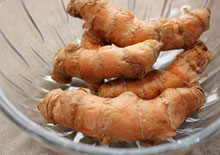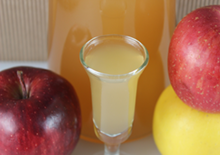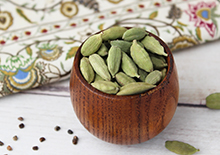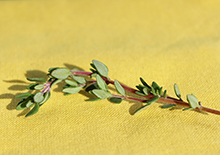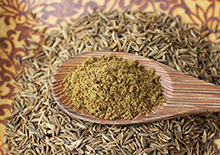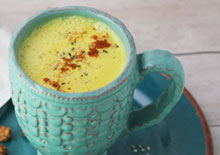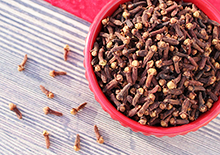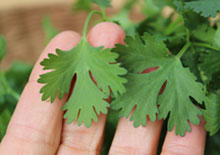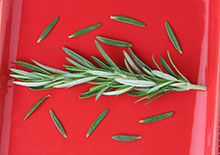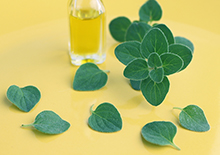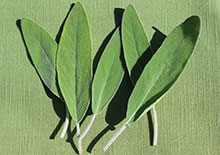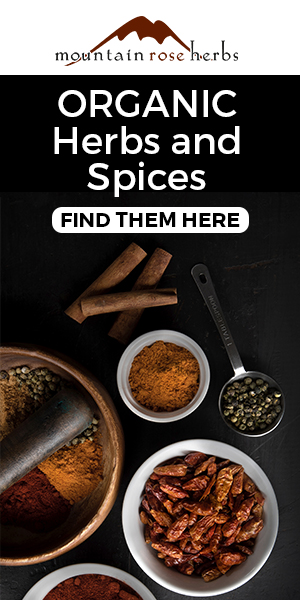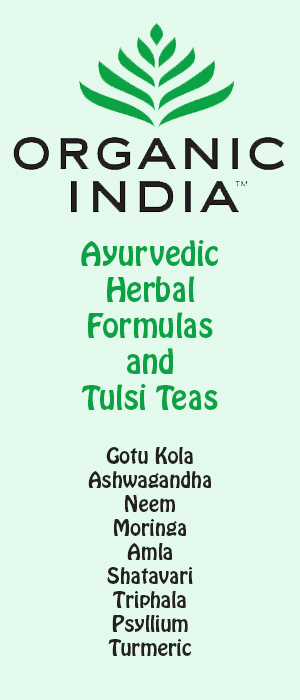- Home
- Herbs and Spices
- Fire Cider Recipe
Fire Cider Recipe, A Potent Immune Boosting Circulatory Aid
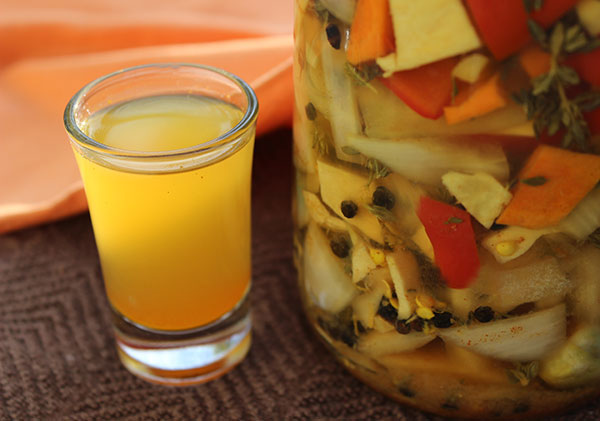
This fire cider recipe was largely popularized by herbalist Rosemary Gladstar, who has taught a version of it at the California School of Herbal Studies since the 1980's. We first started making our own homemade blend in the late 1990's and have been personalizing it over time ever since.
What is fire cider exactly? Really, it can be considered a type of tincture that employs the use of apple cider vinegar as a primary menstruum rather than the alcohol typically used. Essentially, it is a jar filled potion made up of herbs, roots and spices, particularly those of the sinus-clearing variety. It is generally allowed to infuse in vinegar for at least 4 weeks.
Table of Contents
Intro | How to Use | List of Ingredients and Benefits | Fire Cider Recipe | Trademark Controversy
The customary recipe imparted by Rosemary Gladstar includes the traditionally used basics: horseradish root, ginger, garlic, onion and cayenne. However, over the years many concoctions now include turmeric and a wide variety of other herbs and medicinals like echinacea.
We also like to add in goji berries to our fire cider recipe for extra flavor and LBP's (Lycium barbarum polysaccharides).
Another claimed recipe source for fire cider is referred to as "the master tonic", not to be confused with "the master cleanse." This recipe was published by Dr. Richard Schulze and alleged to have been based on one by herbalist John Christopher, also known as "Dr. Christopher", founder of the School of Natural Healing established in 1953. Including all of these standard ingredients mentioned, "the master tonic" was promoted as a natural antibiotic remedy and simulator for "maximum blood circulation", helpful for a number of acute as well as chronic health issues.
Most modern-day herbalists and fire cider advocates these days use it for similar purposes as an immune-boosting liquid great for eliminating infections and bronchial congestion. It is a beneficial liquid to consume when you feel the onset of the flu or a cold and also works to increase digestive fire and is clearing to the bowels.
How to Use Fire Cider
The key is not to overdo it by consuming too much at once, which may cause adverse reactions and stomach upset. Small doses are advised and to be taken periodically, not on a regular basis. In addition, it should be mainly avoided by individuals with Pitta body types or excessively hot constitutions, in which spicy foods are not recommended.
The first taste of fire cider will obviously be a very potent one, usually making you cough slightly as it moves past your throat and through your sinus cavities. It also causes a very warming sensation that can actually be tracked as it moves through the body. Too much can cause burning stools.
That being said, the typical dose for fire cider is one teaspoon taken by the spoonful between 1-3 times a day. Depending on your tolerance to hot spices, sometimes the use of 1/2-1 ounce shot glass gulps are traditionally recommended for certain conditions.
Although this popular herbal legacy is a fiery hot pungent combination, most people find that it has a very pleasant taste. When whisked with raw honey, after the 4 week period, it also makes a great base for vinaigrette salad dressings and can be used in other recipes when spiciness is required.
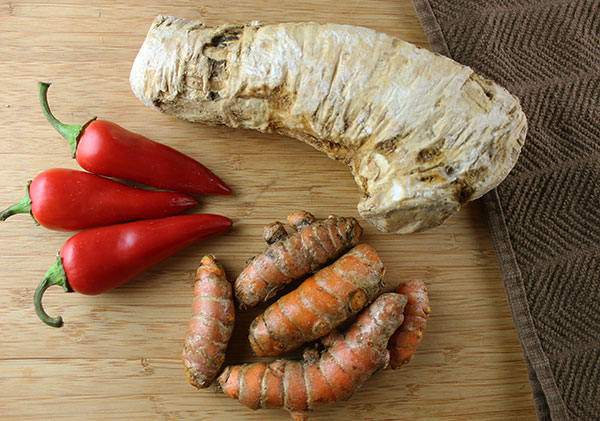
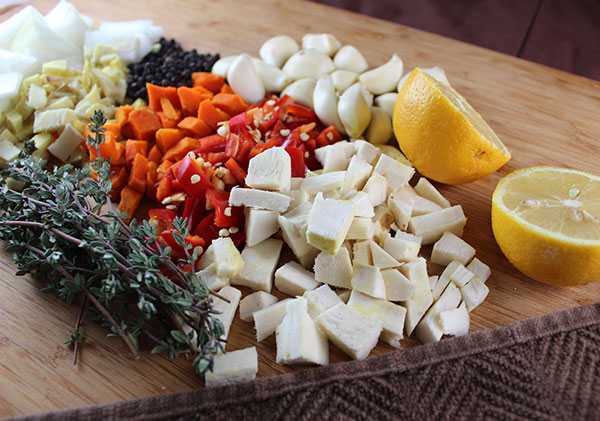
Fire Cider List of Ingredients and Their Benefits
Apple Cider Vinegar - This fermented liquid has been used as a folk remedy for many health and skin issues. Raw unpasteurized apple cider vinegar acts as a natural prebiotic that helps to feed beneficial gut bacteria and stimulate stomach acid, assisting in the digestion of protein and fats. It contains malic acid which has been shown to have anti-inflammatory benefits. It is rich in enzymes, potassium and exhibits cleansing effects.
Horseradish - No fire cider recipe is complete without the use of fresh horseradish root. It has been used by herbalists since the Middle Ages as a household folk remedy for sore throats, bacterial infections and respiratory disorders. It is a powerful expectorant that contains significant amounts of glucosinolates, cancer-fighting substances which have been shown to increase the liver’s ability to detoxify carcinogens. Horseradish is a cruciferous vegetable that activates digestive fire and is also excellent for eliminating parasites from the body. It is considerably high in vitamin C content.
Turmeric Root - A common East Indian curry ingredient, turmeric is a source of immune-boosting antioxidant-rich compounds, like curcumin, and also provides antibiotic, antiviral and antifungal properties. Consuming turmeric root is a simple and effective way to re-boost immune health and keep us free of disease and sickness. Other evidence suggests its specific usefulness as an anti-inflammatory, helpful as a remedy for aches, muscle soreness, digestive disorders and for combating infections.
Ginger - This commonly used root is respected for its ability to increase circulation, reduce nausea, alleviate arthritic pain and increase digestive functions. Ginger is antibacterial, antimicrobial and acts as a naturally energizing herbal stimulant.
Jalapeno Pepper - The type of jalapeno we promote using are the ripe varieties that are a bright red color, not the green peppers. Jalapeno is a rich source of vitamin C and the pepper seeds are high in capsaicin, which works as an anti-inflammatory and vasodilator, encouraging healthy blood circulation.
Goji Berries - One of our top 10 superfoods, goji berries are loaded with specific polysaccharides (LBP's) that help to fortify the immune system and have shown to be effective in raising the
health-enhancing antioxidants superoxide dismutase and zeaxanthin.
Cayenne - Another circulatory aid and mucous dissolver, cayenne pepper also contains ample amounts of capsaicin, which is useful for dilating the blood vessels and energizing the body. It is stimulating to gastric juices and helps to speed up metabolism. The fresh pepper or powder is an excellent home remedy for parasites.
Onions and Garlic - Onions are garlic are rich in beneficial sulfur-containing compounds as well as polyphenols. White or yellow onion is generally hotter and more pungent than red onions and are the ones we find most commonly used for a fire cider recipe.
Peppercorns - Black pepper, does not contain capsaicin like cayenne or jalapeno, but another substance called piperine. Piperine is the main component responsible for its spicy qualities and is known for its ability to increase the bioavailability of many nutritional substances consumed with it. Black pepper is very useful for increasing digestive enzymes.
Fire Cider Recipe
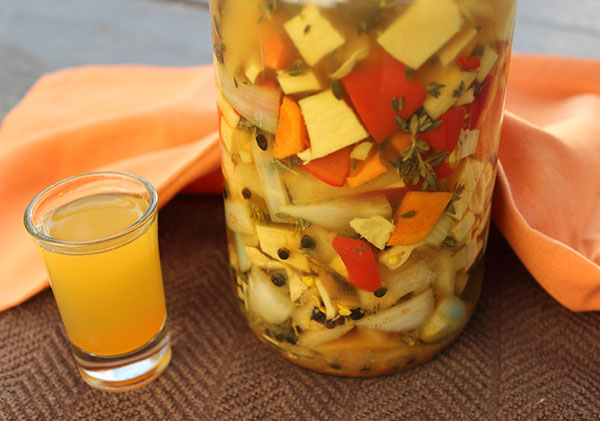
One of the best parts about making your own fire cider recipe is that it is relatively inexpensive to create and will pretty much last you for many years when stored appropriately.
It should be made with raw, unfiltered apple cider vinegar for the highest health benefits. Moreover, organically grown and non-GMO is always advised over conventional sources. All ingredients used are best if fresh rather than dried.
This fire cider recipe is designed for a one-quart glass jar.
Ingredients:
- 1 bulb peeled garlic cloves
- 1/2C ginger root (peeled)
- 1/2C horseradish root
- 1/4C turmeric root
- 3 red jalapeno peppers
- 1 white or yellow onion
- 2T goji berries
- 2T peppercorns
- 3T fresh thyme leaves
- 1/2t cayenne powder
- 1 lemon juiced
- 1t lemon zest
- apple cider vinegar (enough to fill the jar)
- raw honey to taste
Directions:
- Chop up ginger and horseradish root. Add to a one quart jar.
- Chop the turmeric, peppers and onion.
- Add to the jar along with peeled garlic cloves and the remaining ingredients except vinegar and honey.
- Press down firmly and pour apple cider vinegar over the top until it covers the ingredients.
- You can at this point place a glass sauerkraut "crock rock" over the top to keep the mix submerged under the vinegar, but it is not completely necessary.
- Place a piece of wax paper on top and preferably a plastic lid as metallic lids tend to rust when exposed to acidic substances.
- Allow to sit in a dark pantry or cupboard space for four weeks or longer if preferred.
- It is a good idea to shake it every few days.
- Make a label for your jar with the date and ingredients used.
- Strain when ready after "tincturing process" and whisk in raw honey to taste. We like to use about 2T.
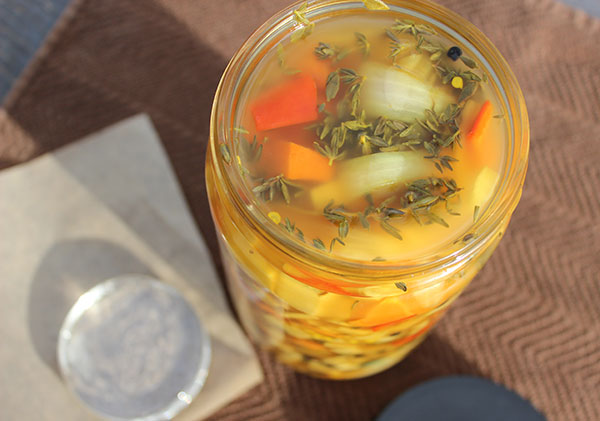
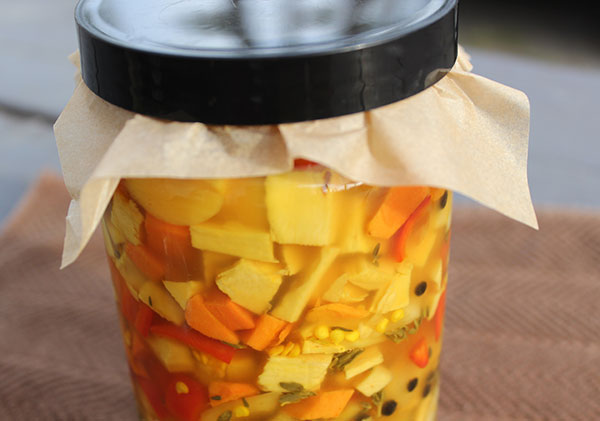
While it can be refrigerated, it is not completely necessary when stored in a cool place or pantry location.
Other Herbs and Spices
You can also add in many other herbs and spices and superfoods to the mix over time. Chinese tonics, like astragalus root and schizandra, can be infused as well as wild rosehips and other types of peppers and fresh herbs, like habanero and rosemary.
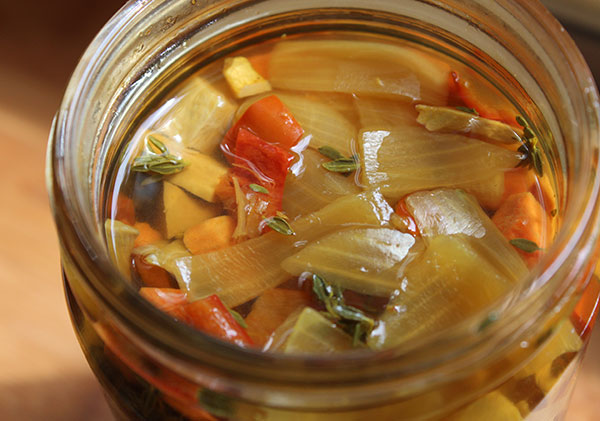 Fire Cider After 1 Month
Fire Cider After 1 MonthThe Fire Cider Trademark Controversy
Some of you may have heard about the controversy a few years back in 2012, when a small company trademarked the term "fire cider" (Fire Cider™) and was legally able to stop herbalists from selling their own homemade products. This left quite a few small-scale herbalists vending their remedies
online upset about a recipe they have been using for many years.
In the website article entitled, "Fire Cider, A Tradition, Not a Trademark", Rosemary Gladstar expresses that "Fire Cider was part of that herbal revolution; it was a medicine we could make in our kitchens, share with others, and bottle, label, sell if we chose to and empower."
We would like you to be aware that this does not mean you can't make your own homemade fire cider recipe, you just can't legally sell it under the name "fire cider." So, enjoy and share your final potion with family and friends!

